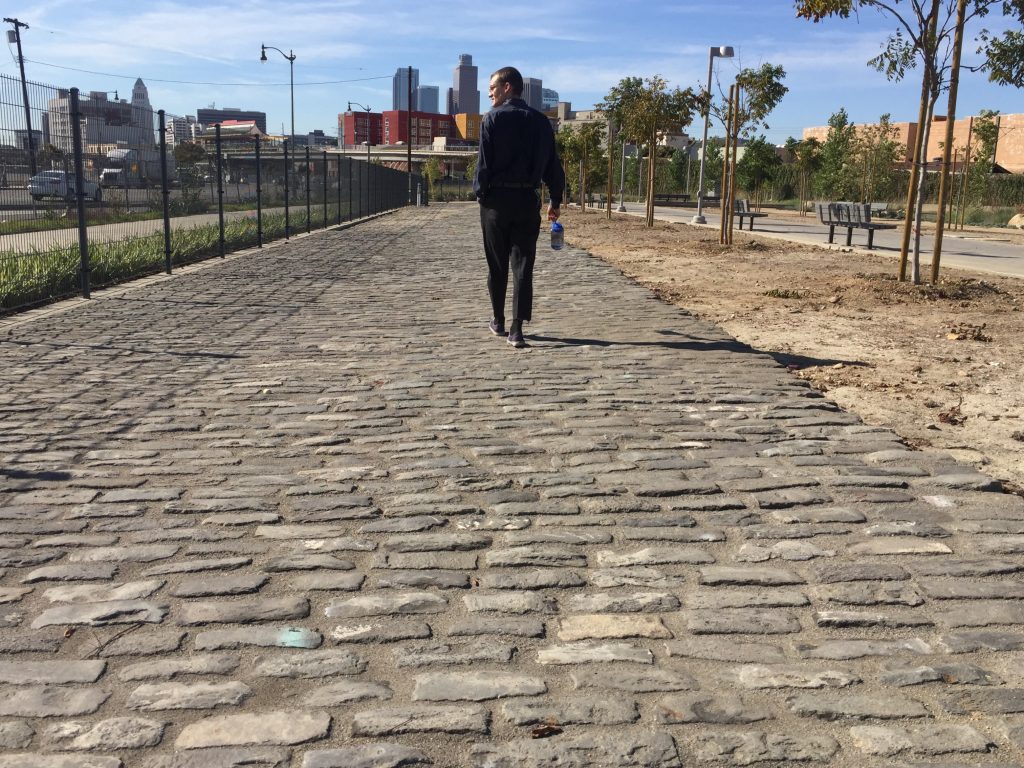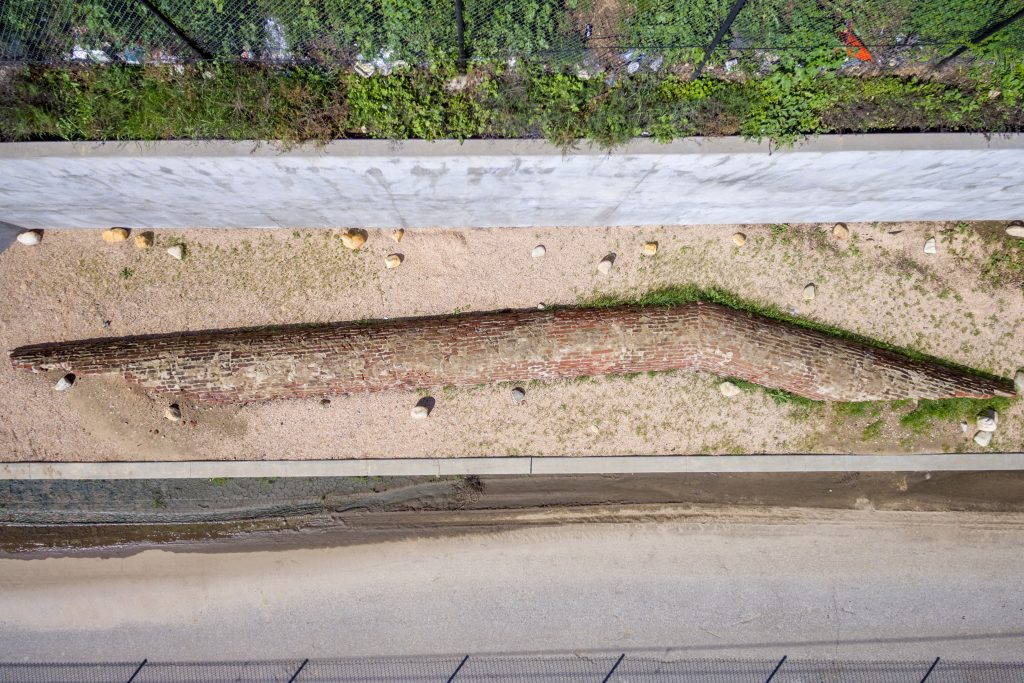The History of LA State Historic Park
LA State Historic Park is located in the known territory of the Tongva people. One large Tonvga village, Yang Na, sat within a mile of today’s park. The Tongva were renamed Gabrieleño after Mission San Gabriel was founded in 1771.
The ongoing development of the region by Spanish-colonial settlers and then the Southern Pacific Railroad left behind various cultural remnants that are still visible in the park today. Read on for more information.
Land Acknowledgement
Los Angeles State Historic Park is located on Tongva land. Learn more below.
English
Spanish
Historic Pavers
Hidden under Los Angeles State Historic Park are indelible remnants of the commercial power of this former rail yard. Archaeological investigation and park construction revealed thousands of hand chiseled 19th century granite paving stones. Railroad workers installed these “cobbles” as an all-weather surface to help expedite the round-the-clock delivery and distribution activities at the Southern Pacific Railroad’s River Station freight house. Today, several original sections of the commercial “roadway” are exposed and integrated into the park landscape providing visitors a chance to retrace the steps of those that brought this site to life for well over a century.
Zanja Madre
What you see is an aerial view of an exposed segment of the brick-encased Zanja Madre. Literally the “mother ditch,” the zanja madre was the initial earthen-walled ditch that carried water from the Los Angeles River to the plaza of El Pueblo de Los Angeles.
The Spanish-colonial settlers and local Native Americans constructed it beginning in 1791, making it Los Angeles’ first public works project. During the 19th century the system of earthen ditches grew to nearly 50 miles in length, later being enclosed in brick to improve sanitation and reduce evaporation. By the turn of the century, Los Angeles had outgrown its zanjas, installing modern distribution systems and tapping water sources far from the region in the Owens Valley.
Roundhouse & River Station Shops
Today, the 14-foot wide elevated walkway traces the outside perimeter of the historic River Station Roundhouse site. Built in the 1880’s, the roundhouse surrounded a 75-foot diameter turntable used to place locomotives into one of the many roundhouse repair stalls. The roundhouse was one of the most prominent buildings of the maintenance facility that dominated the station until it moved across the Los Angeles River in 1903. The shops also included a coaling dock, woodhouse, blacksmith shop, machine shop, paint shop, and transfer table, all for maintaining the Southern Pacific’s fleet of engines and rolling stock. In the 1890’s, the River Station employed some 300 workers, making it the City’s largest employer.




